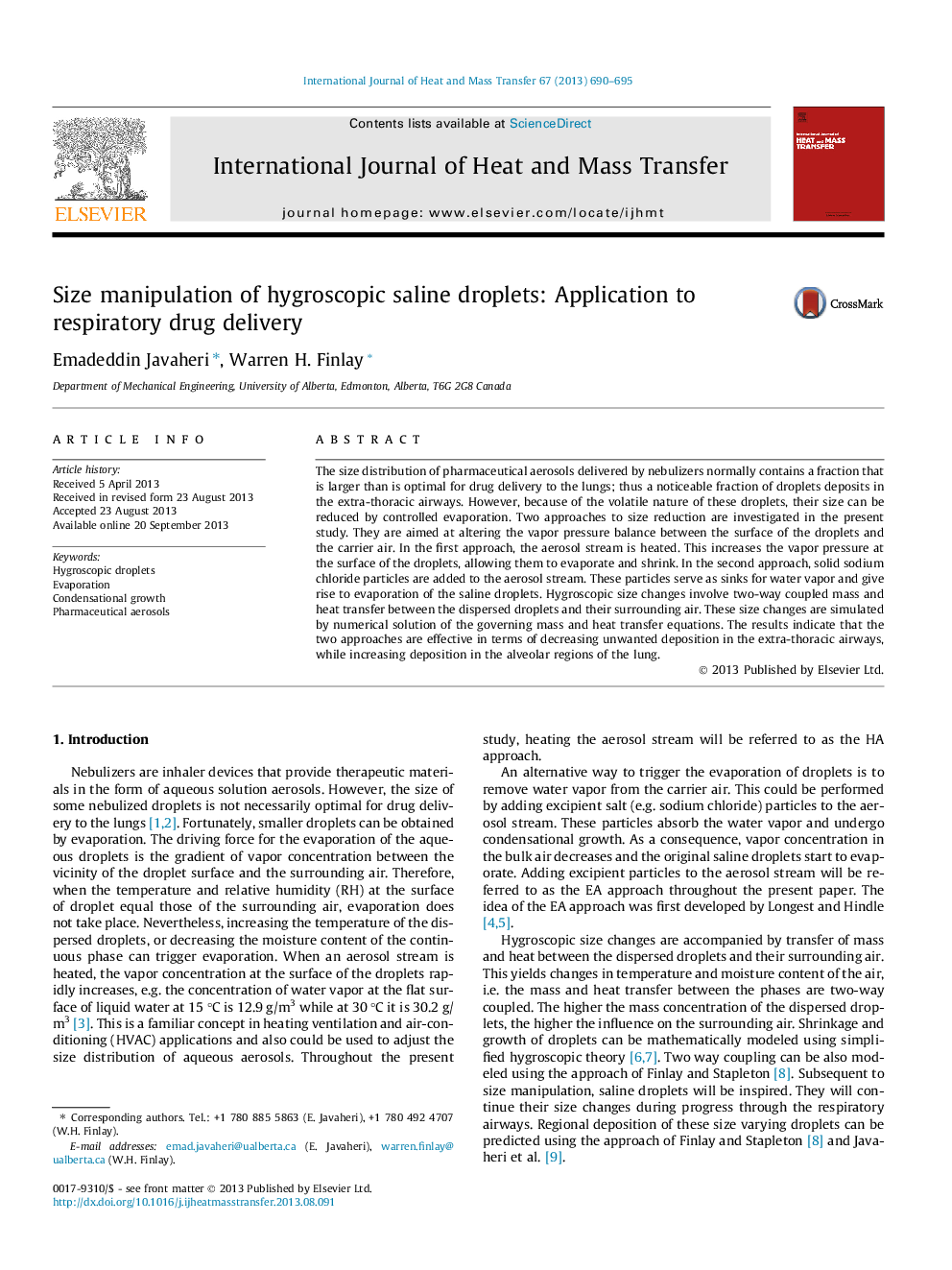| Article ID | Journal | Published Year | Pages | File Type |
|---|---|---|---|---|
| 657977 | International Journal of Heat and Mass Transfer | 2013 | 6 Pages |
The size distribution of pharmaceutical aerosols delivered by nebulizers normally contains a fraction that is larger than is optimal for drug delivery to the lungs; thus a noticeable fraction of droplets deposits in the extra-thoracic airways. However, because of the volatile nature of these droplets, their size can be reduced by controlled evaporation. Two approaches to size reduction are investigated in the present study. They are aimed at altering the vapor pressure balance between the surface of the droplets and the carrier air. In the first approach, the aerosol stream is heated. This increases the vapor pressure at the surface of the droplets, allowing them to evaporate and shrink. In the second approach, solid sodium chloride particles are added to the aerosol stream. These particles serve as sinks for water vapor and give rise to evaporation of the saline droplets. Hygroscopic size changes involve two-way coupled mass and heat transfer between the dispersed droplets and their surrounding air. These size changes are simulated by numerical solution of the governing mass and heat transfer equations. The results indicate that the two approaches are effective in terms of decreasing unwanted deposition in the extra-thoracic airways, while increasing deposition in the alveolar regions of the lung.
